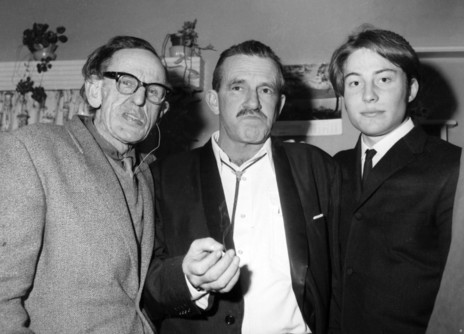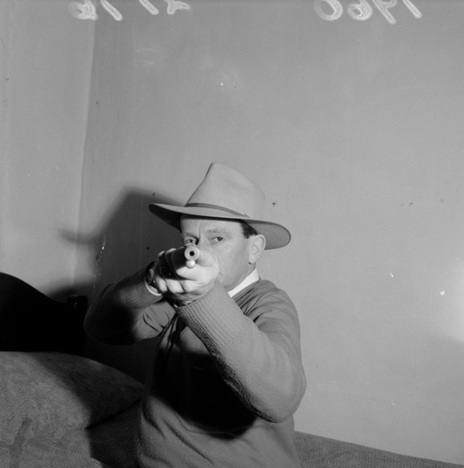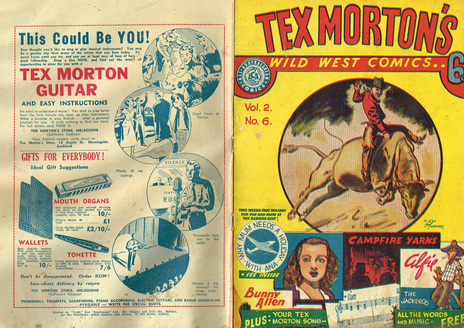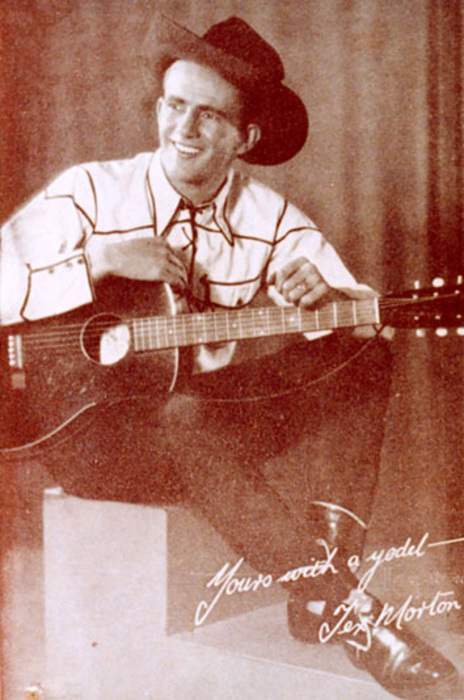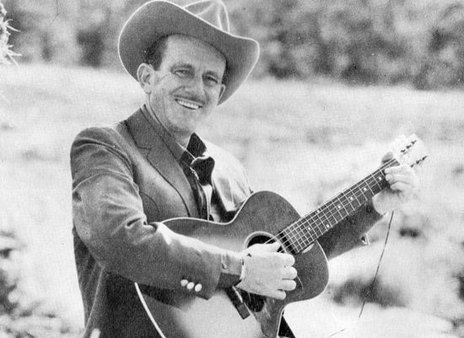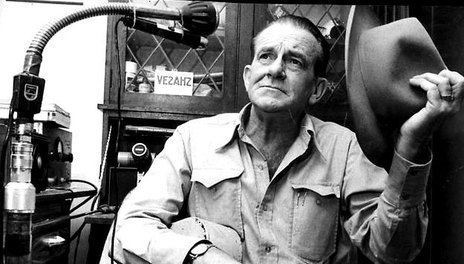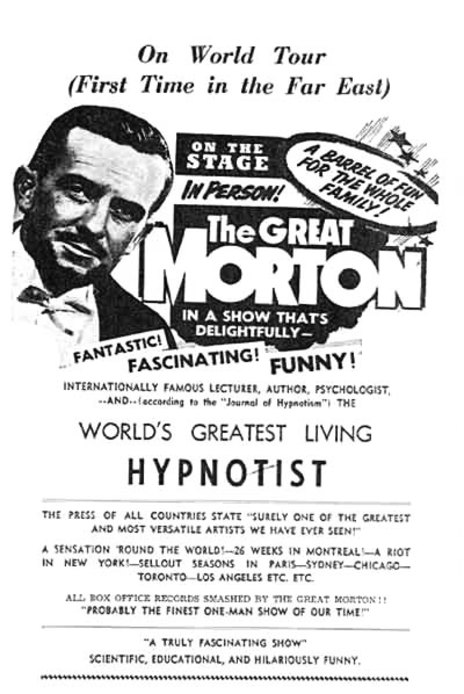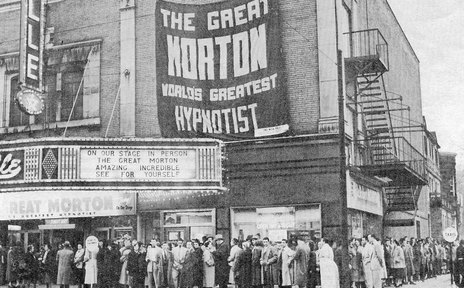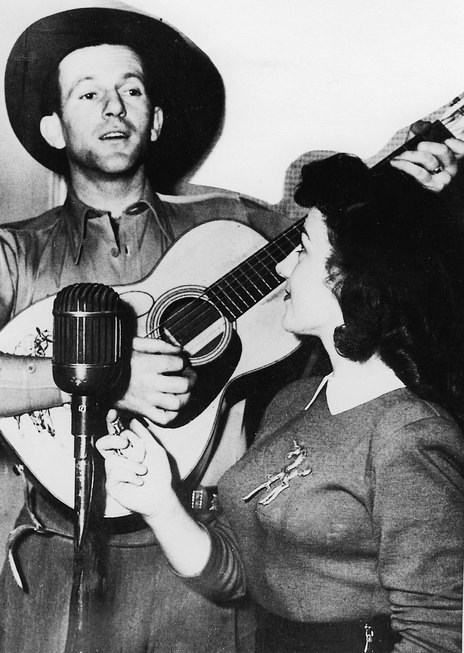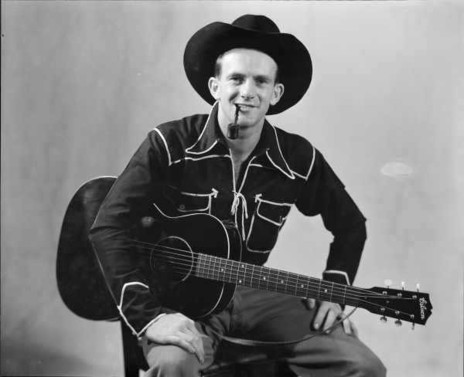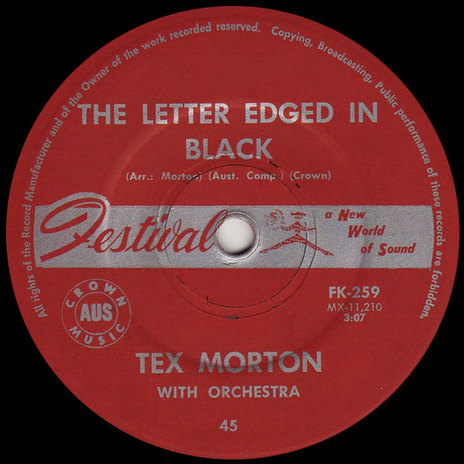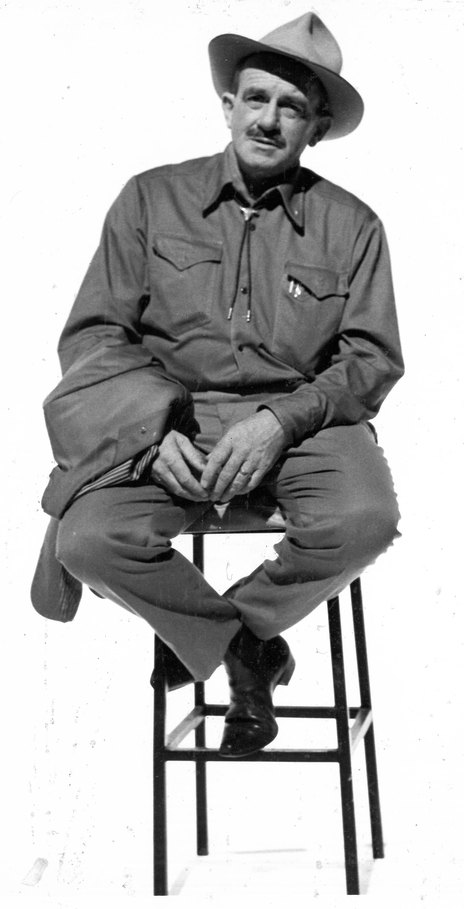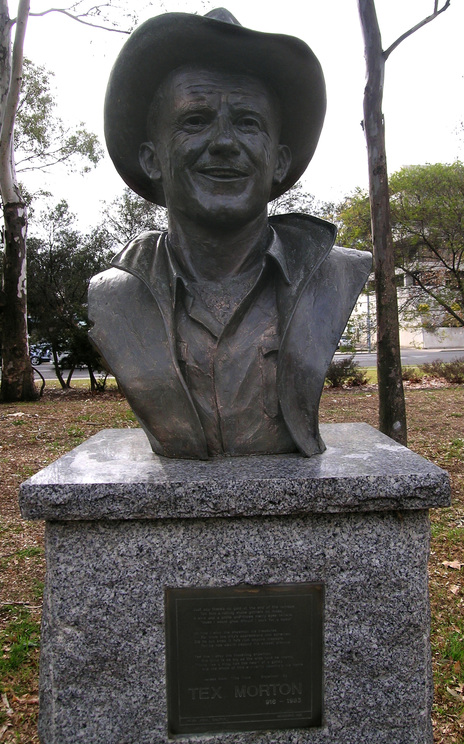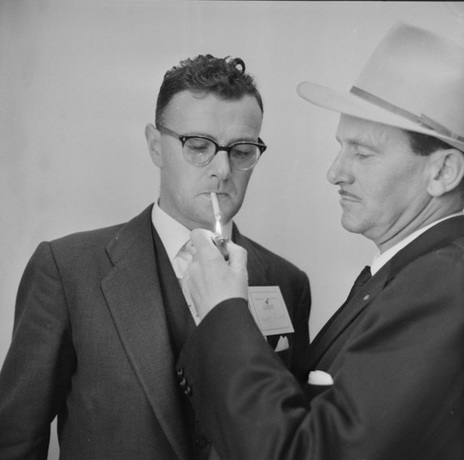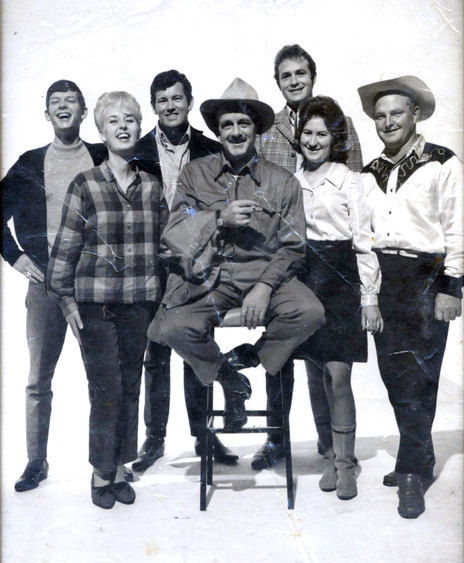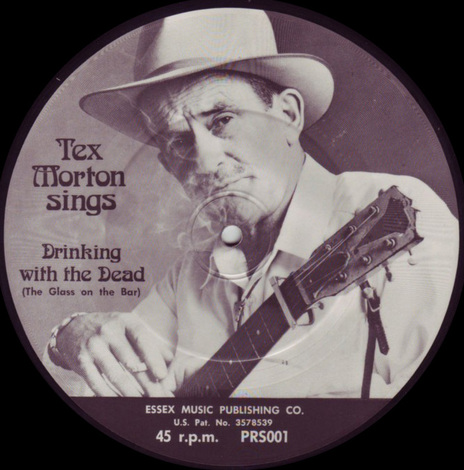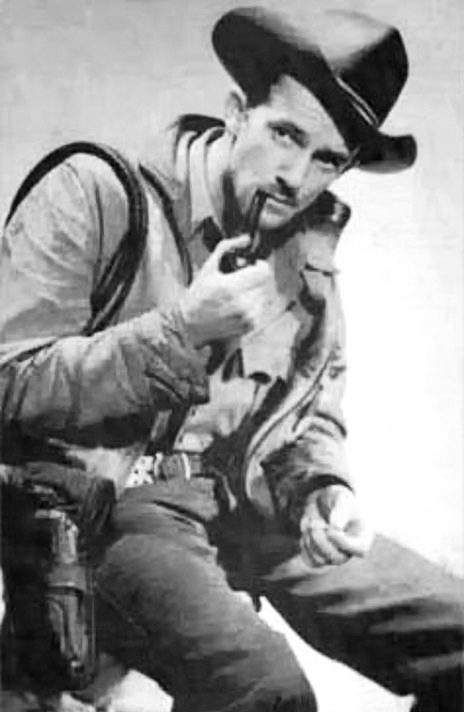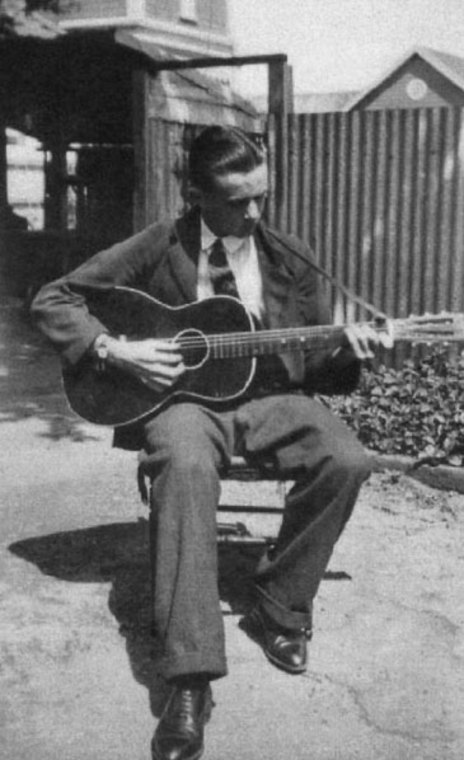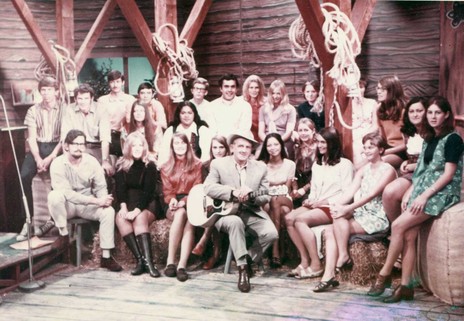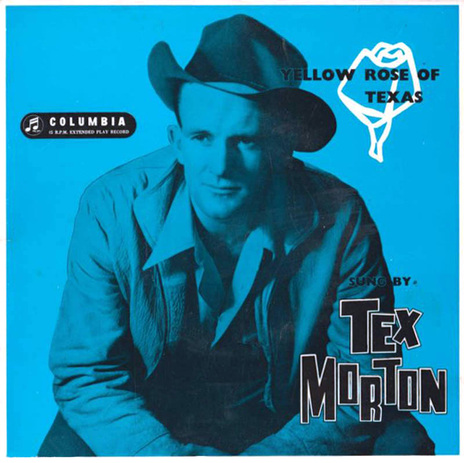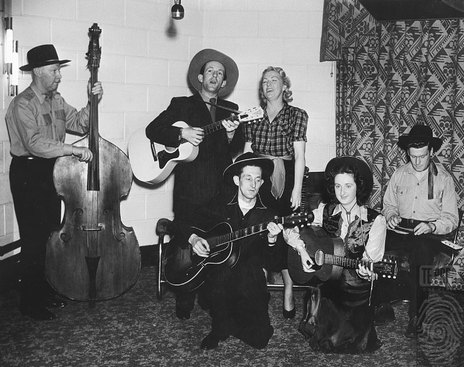Born in Nelson, New Zealand, on 30 August 1916 as Robert William Lane, Tex Morton started running away from home in 1930, at the start of a decade of hard times, a kid aged 14. Clutching his guitar with a few songs and chords, he learned from neighbourhood school chums, itinerant sailors and circus hands, and strummed along with American 78rpms of his hobo hero Jimmie Rodgers, the Carter Family and Carson Robison’s ‘Peg Leg Jack’.
He busked and worked odd jobs picking fruit and in road gangs. At Napier, he joined a roadshow called the Gaieties of 1932. “We starved. Often our only food were a few potatoes and a couple pints of milk given to us by farmers in exchange for a few free tickets to the show.”
The songs were among the first hillbilly recordings made outside the USA.
About this time he started recording songs in Wellington using seven-inch wide aluminium discs with a Speak-A-Phone label (a brand of office dictaphone machines). The songs were among the first hillbilly recordings made outside the USA. Two versions of Goebel Reeves’ ‘End Of The Hobo Trail’; two versions of ‘The Insult’ by Frank Crummit; Harry Torrani’s ‘Mexican Yodel’ and ‘The Last Roundup’, first recorded by Victor Young in 1933 and by Gene Autry the next year. “They used to play them with a bamboo needle," said Morton. "They were the first records I made and I took them home and the local radio station played them.”
He first arrived in Australia about late 1932 and busked the streets of Sydney for a couple months, meeting – and forming a friendship with – Australian bard Banjo Paterson. He then drifted north to the circuses and carnivals wintering at Rockhampton in north Queensland. He was hired as a wood and water boy but became known as the kid who would have a go at anything – take on all comers at the boxing booth, ride motorbikes round the Wall Of Death and hold cigarettes in his mouth for sharp-shooters. He began to polish up a sharp-shooting and whip-cracking act of his own.
In 1936 ‘Tex Morton – The Yodelling Boundary Rider’ recorded songs for Regal that helped the former hobo bECAME an international star.
He wandered the Bush between Queensland and Darwin, down through the Centre to Adelaide, paid 2/6d for a busker's licence at Rockhampton in August 1935. Within months he had won a talent quest on Radio 2KY in Sydney and gained a contract with the Columbia Regal Zonophone label. In February 1936 under the name ‘Tex Morton – The Yodelling Boundary Rider’ he recorded the first of about 90 songs for Regal that turned the former hobo into an international star.
His recordings sold up to 10,000 copies a month as he was photographed with politicians and celebrities, mobbed in public and earned four-figure sums each week. Morton added to the mass popularity with his ‘butter box’ guitars sold by mail order, a Tex Morton comic book that claimed a circulation of 100,000 copies a week, and his own Wild West Rodeo show that travelled between towns in a convoy of a dozen cars and trucks. By 1939 the rodeo had upgraded to two exclusive trains for sell-out seasons in Sydney and Melbourne. During his short years with Regal Zonophone between 1936 and 1943 Morton racked up 78rpm sales of about 650,000 copies.
Early recordings such as ‘Texas In The Spring’ and ‘Going Back To Texas’ set Tex Morton firmly in the American hillbilly mould, but his original compositions quickly adopted an Australian landscape peopled with local identities. During the next five years Morton recorded 16 to 18 sides a year – covers of Jimmie Rodgers and Vernon Dalhart songs about railway bums and hobo trails alongside Morton originals about Queensland freight trains, the wandering stockman buried with his stock whip and blanket, the bagman, the railway to Gundagai, a shearer called Billy Brink and roughrider broncos called Rocky Ned, Aristocrat and Mandrake.
‘Old Shep’, about a dog, became his most requested number. ‘Black Sheep’, his biggest seller with 80,000 copies. He sang about the dilemmas of ‘Why Should I Work’ and ‘Crime Does Not Pay’, the lifestyle of a railway bum in ‘Travel By Train’ released in 1939 and ‘The Ned Kelly Song’ about the 19th-century outlaw, suggesting “perhaps poor Ned was not a bad guy”.
‘Sergeant Small’ about a Queensland railway detective in 1938 was among the first records banned in Australia as Morton “valorised itinerant workers and mocked figures of authority, locating himself within the nationalist bush-legend tradition.” His music had an enduring masculine sentimentality for the bush worker and the rugged lone hand of the Depression years.
In 1948 Morton teamed up with legendary American talent scout Ralph Peer who dated back to 1920s southern USA with field recordings of the Carter Family and Rodgers for the Okeh label. Peer: “Tex was out-selling not only world-famous artists like Bing Crosby, Gracie Fields, Frank Sinatra and Al Jolson, but all the top country artists together.” Morton sold his rodeo and packed for a career in Hollywood via New Zealand to cut 24 sides from Peer's Southern Music song catalogue at Astor Studio in Shortland Street, Auckland.
In Hollywood Morton lasted eight months with the high-spending millionaires including America's King of the cowboys Gene Autry before being given 24 hours to leave the country as an alien without a work permit.
He turned north to Canada and worked up a one-man show of song, hypnotism, sharpshooting, mind-reading and magic that he toured during the early 1950s from Alaska to Jamaica, billed as The Great Morton, The World's Greatest Hypnotist. Within four years he was reputedly among the highest paid entertainers in America, and claimed appearances at Carnegie Hall and setting box office records in St Louis, Boston and Vancouver.
Within four years he was reputedly among the highest paid entertainers in America.
During 1951 The Great Morton toured across Canada with Dixie Bill Hilton and the Calgary Range Riders. Dixie Bill: “He had a big hypnosis show and also did sharp-shooting and two or three other acts plus his singing. He just packed them in night after night. It was very seldom we played anywhere for less than a week, sometimes two weeks.” Reports that in late 1952 Morton went on stage as a crowd-warmer and compere for a tour to Canada by Hank Williams are unlikely to be true.
In July 1953 he recorded eight sides at the Tulane Hotel studio in Nashville for the Okeh label with musicians including Grady Martin (lead guitar), Owen Bradley (piano), Tommy Jackson (fiddle), Eric Newton (bass), Jerry Byrd (electric steel), and Billy Byrd (rhythm guitar). They played covers of ‘I Was Born In Old Wyoming’ and ‘Black Sheep’ alongside Morton compositions including ‘I’ve Known The Truth’, ‘Circus Boy’ and ‘Kiwi Song’. Morton: “Good off-the-cuff sessions I used to think to myself as world-class.” Record company adverts introduced Tex Morton [Doc Bob Morton] as “The Man From Down Under” singing spirituals, folk songs, western, hillbilly and popular songs with his famous “Australian-style” yodel. Eight sides were released in Canada and four in Australia.
By 1954 Dr Morton had added a Bachelor of Arts degree, and doctorate from McGill University to his CV. After 1955 he relocated to Hollywood and appeared in television and movie roles. In 1959 he returned as Tex Morton to Sydney with a touring show of Grand Ole Opry stars but his pre-war radio audiences were gone. Morton revived his solo show and toured New Zealand, and military bases in Asia, before disappearing into the Australian Outback for several years with his two-way shortwave radio and an old yellow cat he made famous with a comeback song called ‘The Cat Came Back’.
Morton resumed recording, compered The Country Touch television series in New Zealand, and reached No.3 in the Australian pop charts in 1973 with a song about a racehorse called ‘Goondiwindi Grey’. He ventured into acting with small-screen roles in Matlock, Class Of 75 and Case For The Defence, and movies including FJ Holden, and We Of The Never Never. In 1981 he made one of his last appearances aged 66 in the award-winning film Goodbye Paradise, about a terrorist plot to take over Queensland.
Tex Morton died in 1983 in Sydney and was buried in his hometown Nelson, his headstone inscribed “a millionaire in the experience of life”.
--
Read more: a page of Tex Morton images
Read more: Rock & Roll Rendezvous, Tex Morton & Gene Autry
